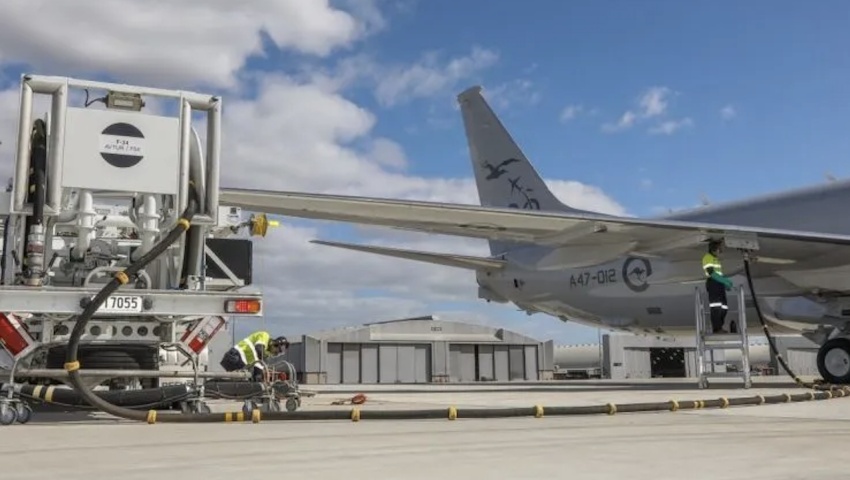For the first time, an RAAF P-8A Poseidon refuelled using a new ‘in-ground’ system at RAAF Base Edinburgh instead of relying on traditional trucks.
The new process is 30 per cent quicker because it removes the need for a pause to swap in new vehicles.
Flight Sergeant Daniel Poynter said a faster refuel was essential because the Poseidon is regularly called out on short-notice search and rescue missions.
“The system allows for up to three simultaneous refuels to be conducted with almost zero impact on the fuel flow rate,” he said.
“With the increased speed of refuelling and the reduced downtime waiting for tanker changeovers, the reduction in time wasted allows aircraft maintenance personnel to be more efficient.”
The new system utilises a hydrant line that is plumbed from the Edinburgh Base Fuel Farm to a hydrant point at the No. 92 Wing apron at the base.
When an aircraft now needs fuel, it is connected to a No. 24 Squadron tanker hydrant cart, which connects to the hydrant point, rather than relying on trucks.
As the in-ground refuelling hydrant points are installed along various parking positions on the No. 92 Wing main apron, they are now the primary source of refuelling for the P-8A Poseidon aircraft at RAAF Base Edinburgh.
Sergeant Poynter said rigorous testing was required to get the in-ground refuelling process ready for use.
This included trials on both single and multiple aircraft fills, resulting in further adjustments and testing on the refuelling capability.
“As safety is of the highest priority, the system was tested in multiple scenarios to confirm it was operating flawlessly prior to the capability being implemented and used in operations,” he said.
As well as being quicker, the new process requires fewer people, enhancing the operational capability of No. 92 Wing and No. 11 Squadron.
The Boeing-built P-8A Poseidon is RAAF’s multi-mission maritime patrol, initially based on Boeing’s classic workhorse, B737NG.
The Poseidon excels at anti-submarine warfare, anti-surface warfare, intelligence, surveillance and reconnaissance, and search and rescue. It has a maximum height of up to 41,000 feet and can fly at speeds up to 490 knots.
RAAF’s first Poseidon was delivered on 16 November 2016, and the Air Force is working towards a final fleet of 15.
The aircraft was introduced to partially replace RAAF’s fleet of AP-3C Orions, together with the MQ-4C Triton unmanned aircraft system.
The P-8A is equipped with advanced sensors and mission systems, including a multi-role radar, high-definition cameras and an acoustic system that is said to boast four times the processing capacity of the AP-3C’s, as well as an extensive communications suite.
An internal fuel capacity of almost 34 tonnes allows the P-8A to conduct low-level anti-submarine warfare missions at a distance of greater than 2,000 kilometres from base. The P-8A will be compatible for air-to-air refuelling with the KC-30A MRTT.
[Related: Local firm wins $100m deal to develop weapons range]








